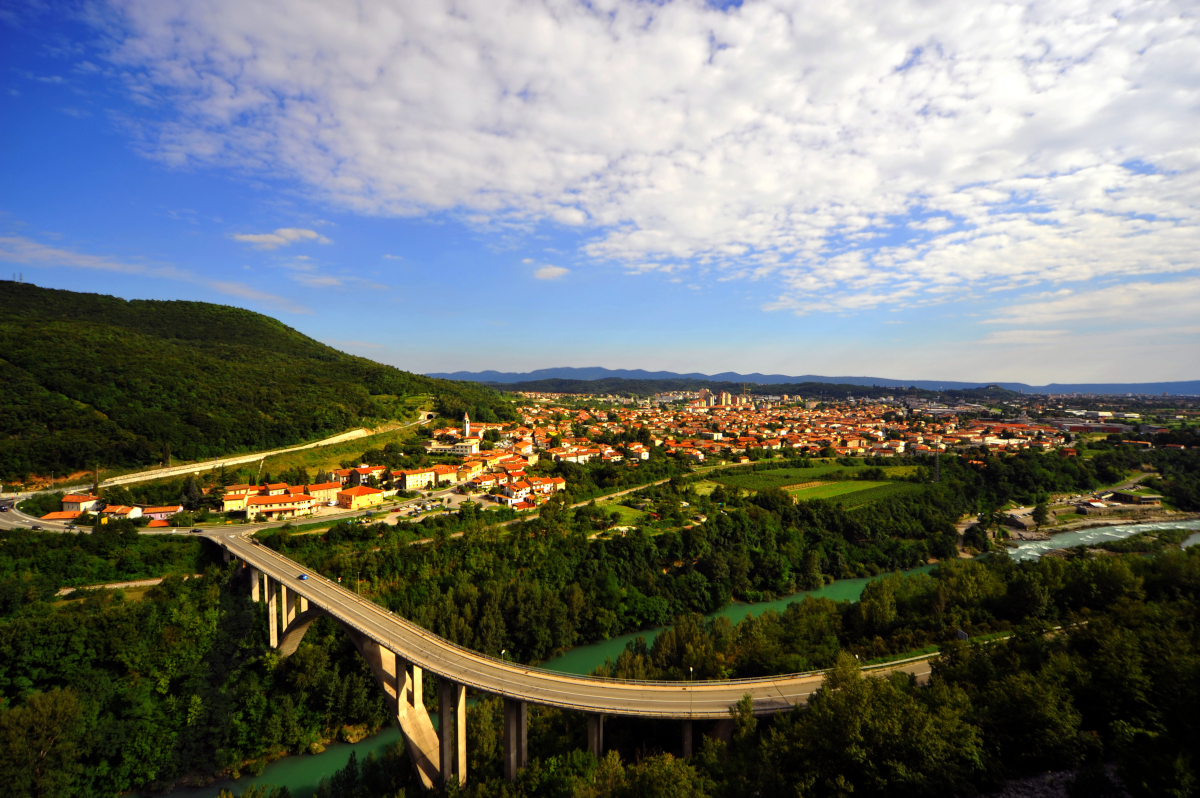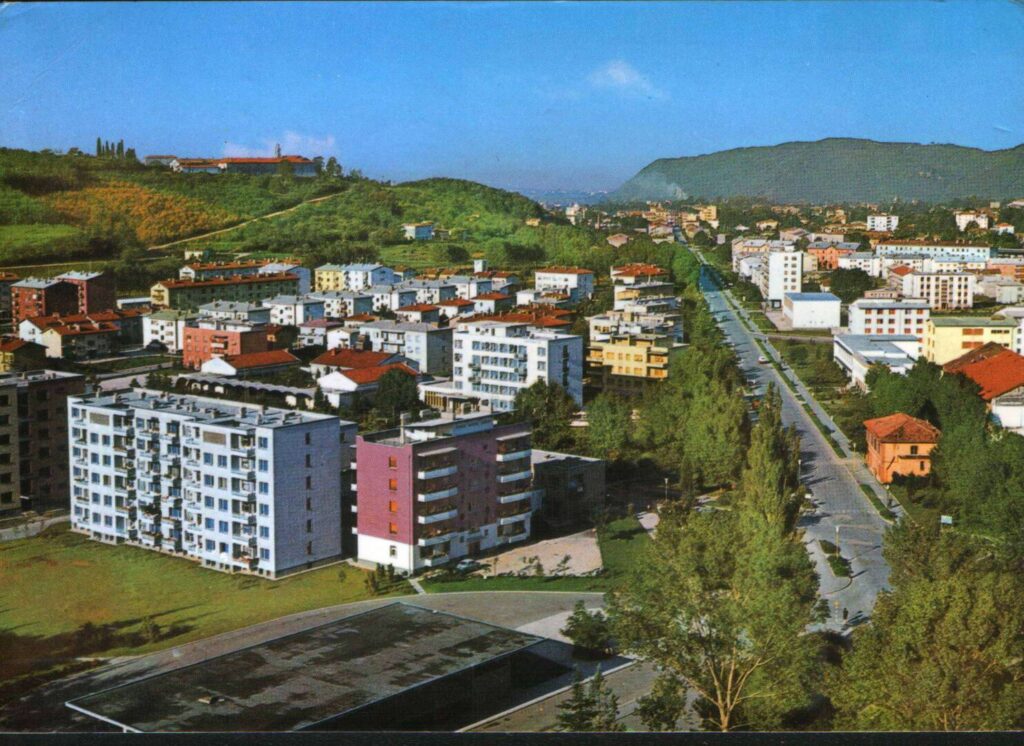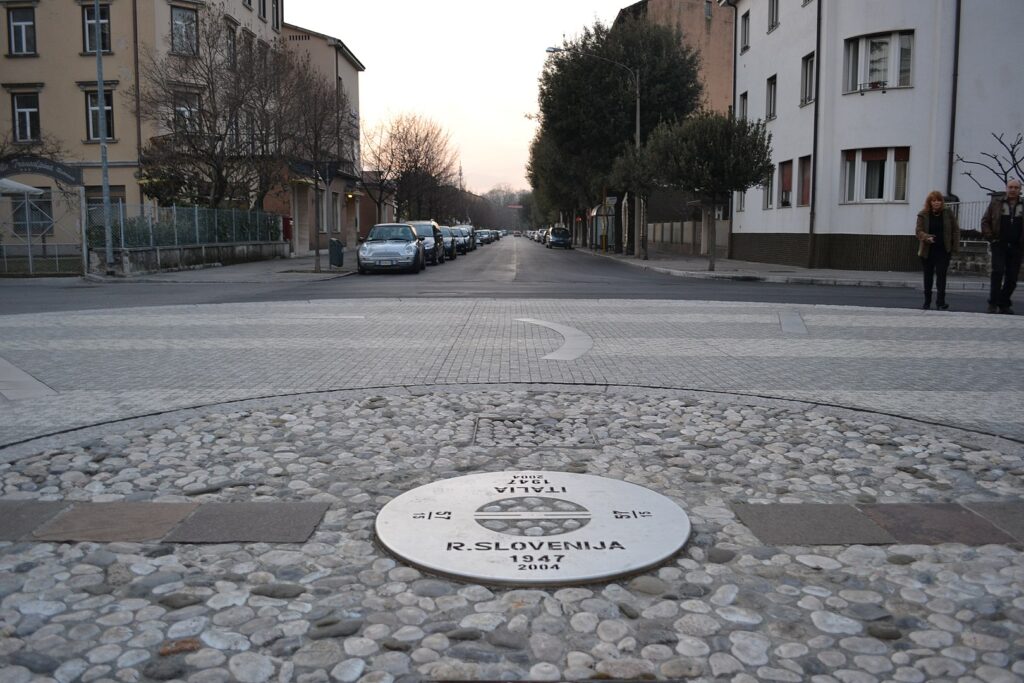In 1947, after World War II, Italy signed a peace treaty with the Allies, including Socialist Yugoslavia. The treaty transferred most of the Slovene-inhabited areas of the Italian region of Gorizia to Yugoslavia. The city of Gorizia itself, however, remained under Italian rule. The new border cut the city off from its northern and eastern suburbs, and about 40% of the municipality’s territory was transferred to Yugoslavia. The area was filled with villages and suburbs and had a population of about 10,000 (almost exclusively Slovenian, with a tiny Friulian-speaking minority). However, they lacked cohesion and were poorly connected. To overcome this problem, the communist authorities of the Socialist Republic of Slovenia decided to build a brand new settlement that would unite these suburbs into a new urban space. The new city was called Nova Gorica or “New Gorizia”.
For decades, Gorizia and Nova Gorica were divided by an iron curtain. Have you heard of the Berlin Wall? A similarly impassable barrier existed here. The term “Gorizia Wall” (in Slovenian, Goriški zid) referred to a fence comprising a 50-centimetre-wide concrete base topped by a five-foot railing built in 1947. It was placed along the Yugoslav-Italian border, cutting through the city of Gorica.
In 2004, following Slovenia’s entry into the European Union, the fence that divided Transalpina Square was removed. However, the free movement of people and goods had to wait until 2007, when Slovenia joined the Schengen Agreement. Since 2004, Transalpine Square has been a free meeting place for both the Italian and Slovenian populations.
In May 2020, during the Covid-19 pandemic, Transalpina Square was once again divided by a wire fence along the Italian-Slovenian border as part of measures to slow the spread of the infection. This sadly reminded many citizens of Gorizia and Nova Gorica of the period between 1947 and 2004, when the two towns were divided by a fence.
The relations between the cities of Gorizia and Nova Gorica have strenghtened over time, gradually overcoming difficulties and mistrust. A key symbol of their friendship is their joint selection as the 2025 European Capital of Culture. Many cultural initiatives are being organised to celebrate this recognition, including theatre, music, and art exhibitions, with Theresia Orchestra proudly featured as part of this very rich programme.
Our orchestra will reside in Nova Gorica from 8th to 16th October and the final concert will take place on 14th October at Kulturni Dom Nova Gorica. For this orchestral residency, Theresia will be collaborating for the first time with conductor Enrico Onofri. The renowned conductor and violinist will work with the orchestra on an all-Mozart programme including the iconic “Jupiter” symphony. Stay tuned for more info about the musical programme! See you soon in Nova Gorica!




